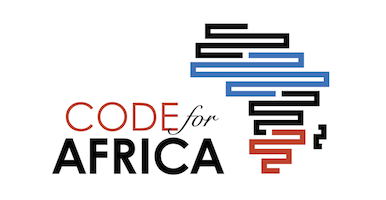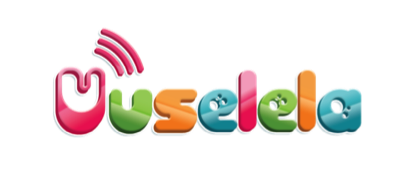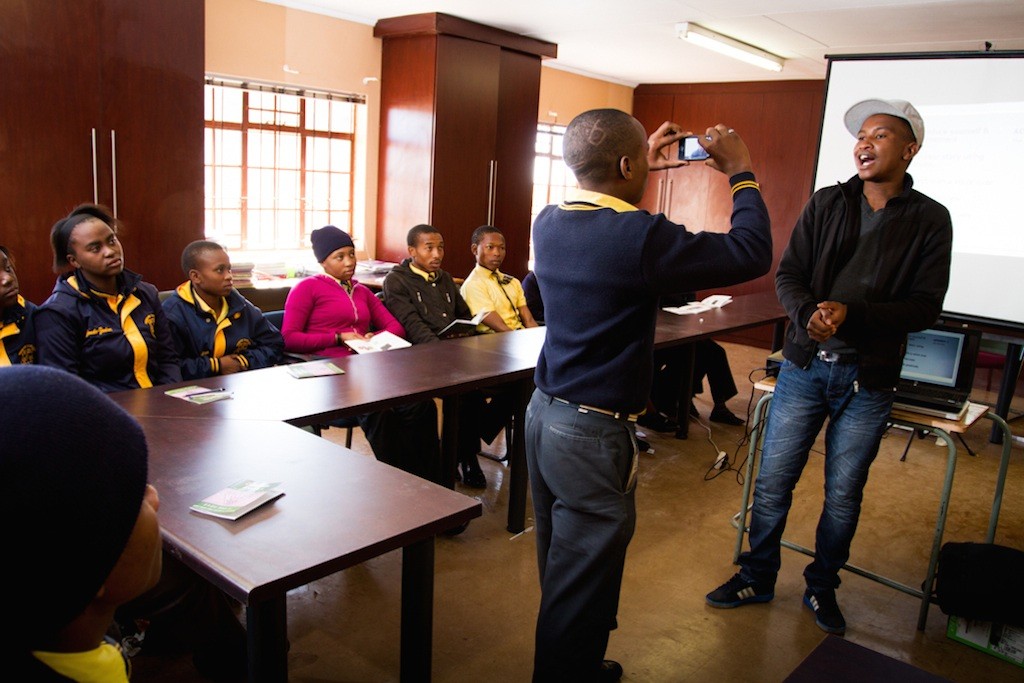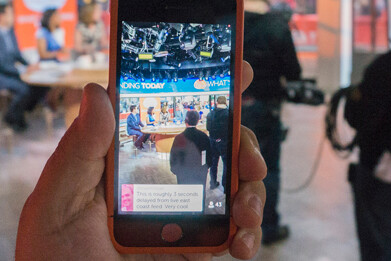As broadcast networks digitise and audiences diverge across Southern Africa, what tools can broadcasters use to create relevant content and maintain public interest?
In early October the Public Media Alliance (PMA) hosted the second day of the SABA AGM and Conference in Kigali, Rwanda. With the broad theme of “Opportunities beyond the digital deadline” the conference was attended by up to 200 media delegates from across the SADC region, with the Rwanda Broadcasting Agency (a PMA member) hosting the event for the first time.
The second day specifically focused on media content in the digital media landscape. Titled “African content in the digital world”, it consisted of a series of panel sessions with speakers from broadcasters and alternative media organisations with specialisms in engaging audiences, reporting and producing high quality content in the digital age.
Day 2 was used to highlight the positives of digital media, and to demonstrate the alternative techniques broadcasters can use to ensure their relevance and produce engaging multi-media content.

Success in the digital media landscape is increasingly found by smaller media organisations that have developed specific and innovative tools and techniques to report on real time issues, provide data and statistics, produce dynamic content, engage their audiences and give them a voice. Our speakers represented these organisations and as they look to expand their reach, we believe there are good opportunities for broadcasters to utilise and partner with them.
Below you can explore some examples of the alternative media organisations that took part in the PMA sessions of the SABA conference. Written by the speakers themselves, each example describes their specialism and offers insight into how their organisations can be used by broadcasters as they digitise their services.
Click on the dropdown tabs below to find out more.
[bs_collapse id=”collapse_5bdb-cced”]
[bs_citem title=”Verification Handbook” id=”citem_f42c-5462″ parent=”collapse_5bdb-cced”]
Whenever emergencies occur, whether it is a man-made disaster such as terrorism, a natural hazard such as flooding, or a health crisis such as Ebola, public service media need to report with accurate information in a responsive manner.
 This has become particularly challenging in an environment where everyone can share information on social networks such as Twitter, YouTube, Facebook and messaging apps like Whatsapp and Telegram. In the wake of any type of emergency, studies show that the rapid spread of misinformation is evident especially on social networks. Journalists in the digital age need to be prepared for countering the fakes, rumours and hoaxes, and verify claims and online contents so that the public can obtain accurate information fast enough to take sufficient actions. Journalists hence need to know how to utilise different online tools and master the techniques and methods to verify and authenticate online contents.
This has become particularly challenging in an environment where everyone can share information on social networks such as Twitter, YouTube, Facebook and messaging apps like Whatsapp and Telegram. In the wake of any type of emergency, studies show that the rapid spread of misinformation is evident especially on social networks. Journalists in the digital age need to be prepared for countering the fakes, rumours and hoaxes, and verify claims and online contents so that the public can obtain accurate information fast enough to take sufficient actions. Journalists hence need to know how to utilise different online tools and master the techniques and methods to verify and authenticate online contents.
The European Journalism Centre’s Verification Handbooks provides free-of-charge expertise on how to deal with the online information so that journalists can report during emergencies and investigate on uncovered issues by using online resources. The initial Verification Handbook offers the principles, methodologies and practical tips on how to verify user-generated contents such as photos and videos that are found on social networks, and advices on emergency preparedness and trauma care in the newsroom. A companion handbook entitled the Verification Handbook for Investigative Reporting centres on documentation and covers how online content verification can be used for investigative stories and journalistic research. In addition, the website also offers free additional materials with case studies and an educator’s guide on the types of fakes so that journalists can get familiarised with the kinds of information they may encounter during emergencies. For those who want to follow the verification course, there is also a newly launched video training platform from the Centre which also offers video tutorials on verification basics for free.
As a non-profit independent journalism training organisation based in the Netherlands, the Centre aims to provide more free online resources for journalists worldwide. And especially in the domain of user-generated content verification, the journalism industry needs more good practices from all over the world, and the Centre is hoping to see public service media leading the verification field to filter inaccurate content and provide information the public needs in the wake of unexpected incidents.
Rina Tsubaki, Project Manager, EJC
Rina was a speaker on our “New opportunities: Engaging audiences with multi-media” panel at SABA 2015
[/bs_citem]
[bs_citem title=”Code for Africa” id=”citem_3706-c385″ parent=”collapse_5bdb-cced”]
Code for Africa is a civic technology and open data organisation building open source tools to create actionable information for citizens across Africa.
 Data gives broadcasters and media organisations the opportunity to connect directly with audiences and personalise their storytelling in brand new ways. Tools available for free today could help you draw an audience to your website during or after broadcast where they could discover how the story you’re covering affects them personally.
Data gives broadcasters and media organisations the opportunity to connect directly with audiences and personalise their storytelling in brand new ways. Tools available for free today could help you draw an audience to your website during or after broadcast where they could discover how the story you’re covering affects them personally.
Code for Africa’s projects include work to encourage voters to register for elections, help patients check if their doctors are properly registered, read local laws for their area and learn what census data says about where they live.
All these stories are classic media narratives reinvented for the data age and all of these tools are built in an open source way so that anyone can reuse this work in their countries.
Because we believe in openness and the open exchange of information, Code for Africa has built platforms which let anyone make data or documents searchable by members of the public. These platforms include openAFRICA where you can discover over 1.8k datasets to reuse and sourceAFRICA where over 10,000 documents have been uploaded and made searchable.
Data can also be used to tell more complicated investigative stories so broadcasters could publish rich information online to accompany in-depth journalism work. By extracting information from the documents on sourceAFRICA and other open databases, Code for Africa created connectedAFRICA, a set of tools showing information from official sources on more than 8,000 political figures in South Africa.
The data tools we’ve helped build for the African Network of Centers for Investigative Reporting has helped them win awards for investigations into the World Bank, Australian mining in Africa and the South African diamond trade.
If all of this sounds overwhelming, fear not. Code for Africa runs a series of training sessions called d|Bootcamps where you or your journalists could come to learn data skills from experts which you can put into practice straight away in your newsrooms for free. We also run d|Masterclass sessions to teach more complex techniques.
Data offers all journalists new ways to tell engaging stories and, with more and more data being released every day, now is the time to get your newsroom to test out what they can achieve with the right data and the right tools.
Stephen Abbott Pugh, Code for Africa
Stephen was a speaker on our “New opportunities: Engaging audiences with multi-media” panel at SABA 2015
[/bs_citem]
[bs_citem title=”Vuselela” id=”citem_b46b-6d71″ parent=”collapse_5bdb-cced”]
Vuselela-Media is a non-profit company (NPC) that aims to improve the lives of young people in marginalised and disadvantaged communities across South Africa to become producers of broadcast visual content through media training and education.
 Vuselela-Media has a team of 30 young filmmakers who produce content that forms part of a TV show called Bona Retsang on SABC 1. Their work is also exhibited at local community screenings.
Vuselela-Media has a team of 30 young filmmakers who produce content that forms part of a TV show called Bona Retsang on SABC 1. Their work is also exhibited at local community screenings.
The filmmakers get regular training from qualified professionals on storytelling techniques and television broadcast technical awareness.
Vuselela-Media is also an accredited Film and Television academy under the MICT SETA that issues the trainee filmmakers a one-year level 5 certificate in Film and Television production after a year of training.
Vuselela-Media is currently working with ten filmmakers across South Africa.

This programme plays an important role in fulfilling skills development requirements for any organisation. It also ensures the production of regular content that covers a national scope that also fulfills language, cultural and racial coverage requirements.
Mthoba Chapi, Media Skills Development Director
Mthoba was a speaker on our “Reaching and engaging younger audiences” panel at SABA 2015
[/bs_citem]
[bs_citem title=”U-report” id=”citem_4880-345a” parent=”collapse_5bdb-cced”]
Connecting youth and decision makers through SMS
Ureport Uganda is an SMS program that engages children and youth on issues they care about.
 Anyone with a cell-phone can join U-report simply by texting the word JOIN to phone number 8500. After answering a series of demographic questions you become a U-Reporter and can start to participate and make change, all via SMS, for free.
Anyone with a cell-phone can join U-report simply by texting the word JOIN to phone number 8500. After answering a series of demographic questions you become a U-Reporter and can start to participate and make change, all via SMS, for free.
By replying to weekly poll questions, a U-Reporter participates by sharing their opinion on given topics. A U-Reporter can also, at any time, send an unsolicited SMS to 8500 sharing whatever is on their mind. Responses are analyzed and mapped in real time on the U-Report web site. U-reporters voices are shared with decision makers, organizations, government or any other interested parties (broadcasters, journalists) who can act on individual or group issues. These decision makers get a chance to base their decisions on the opinion of the youth. The feedback or actions taken are shared back to the U-reporters via SMS or various media channels.
The program works together with partner organizations that make up the core of the U-Report program, continuously recruiting new U-Reporters as well as providing support to the U-Reporters.
Launched in May 2011, the programme has over 297,000 and counting members in Uganda. Due to its success, several countries have taken on the program including Burundi, Nigeria, Swaziland, Central Africa Republic, Zambia, Liberia and Democratic Republic of Congo.
U-Report can be used in as many ways as there are U-Reporters but there are four key areas established where U-Report has proved very successful:
- Project Identification
- Trending
- Accountability
- Advocacy
U-reporters get the opportunity to connect directly with different organizations, channel their voices, communicate with decision makers, access and receive valuable information in line with health, legal, SRH and more.
U-report offers easy communication with people on the ground, easy access to targeted audiences, it promotes organization/group events, it helps to focus interventions and it offers a wide coverage of information/data and access to data in real time. Hence Ureport can be an extremely useful means for journalists and broadcasters to source accurate and relevant information on public opinion from a large swathe of the youth population.
U-report amplifies voices for social change, one voice can be ignored but over a thousand voices cannot!
Fatuma Namukose, Ureport Uganda
Fatuma was a speaker on our “Telling other peoples tales: News and third party coverage of African stories” panel at SABA 2015
[/bs_citem]
[/bs_collapse]
Related Posts
2nd August 2013
The Business of Broadcasting in the Digital Age – Speakers
2nd August 2013
